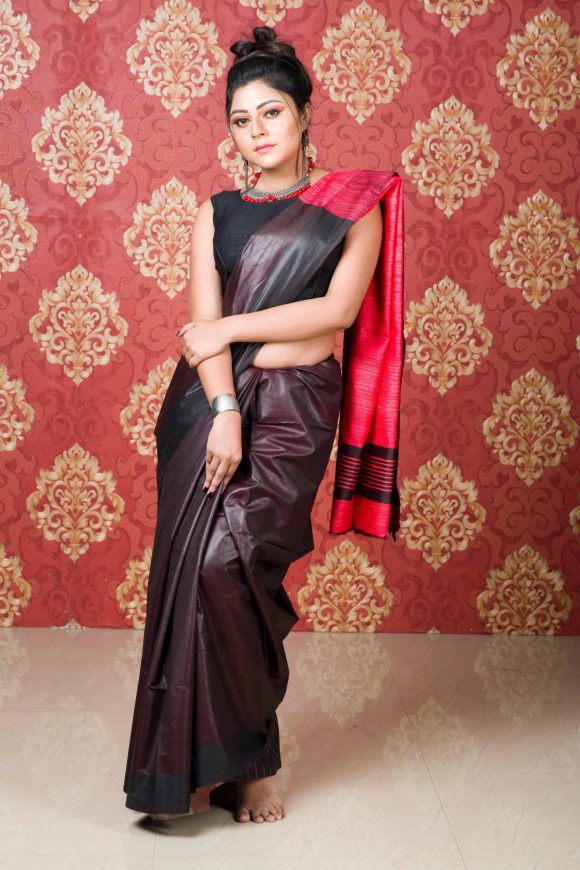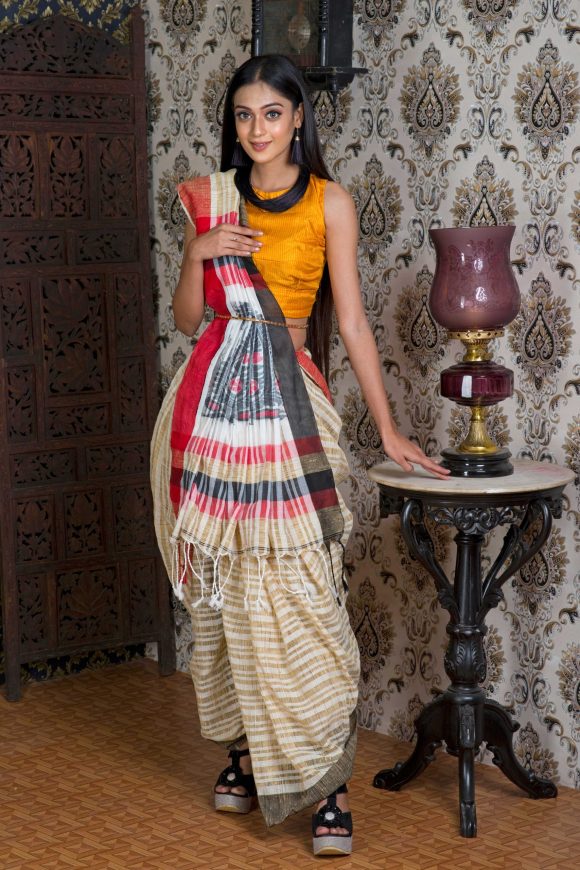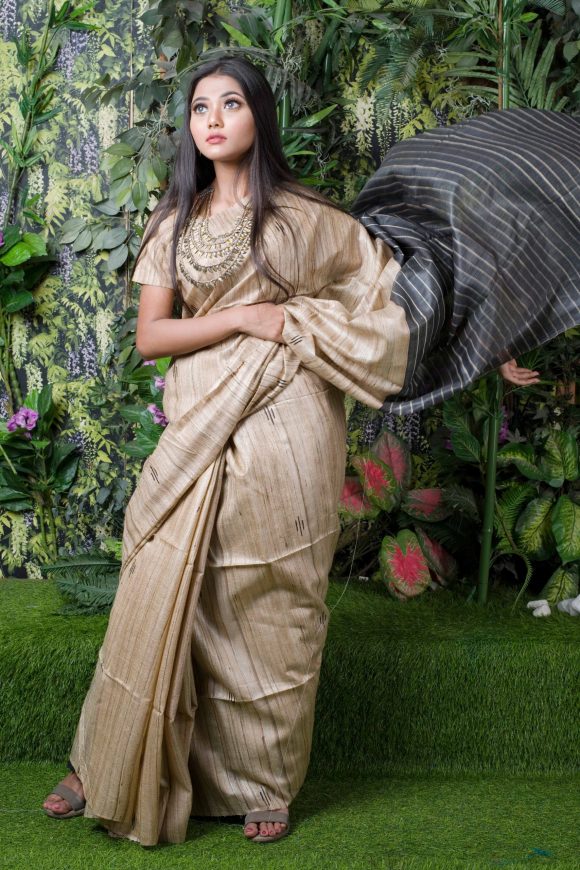Ghicha
Ghicha Sarees: Defining Understated Elegance
The saree varieties of India have diversified and expanded over the years. The days of staying limited with cotton or silk are over. Present years have seen the emergence of varieties of cotton and silk. It results in the availability of a wider range of diverse sarees. It gives you many options, and you can narrow it down based on texture, price, and design. One recent variety is Ghicha saree. It is a lesser-known name compared to Dhakai or Tant. But, it has become the favorite for women of all generations.
History of Ghicha
Ghicha is basically silk. Therefore, to know its history or how it came into existence, we need to start with the history of silk. Its discovery in the 27th century BC in China is itself an accident. The interesting tale features the antics of Empress Leizu, the wife of the Yellow Emperor. A cocoon of silkworm fell into her teacup one day when she was having tea. Attempting to remove it caused unrolling of its thread.
This intrigued the empress, and it led her into learning sericulture. For a long time, silk remained a mystery elsewhere in the world. Later, it spread across the world. The history of weaving silk in Bengal dates back to the 18th century. Along with Tant and other varieties, Mughal emperors encouraged the art of weaving silk sarees.
The indigenous craft of weaving, including silk, suffered a setback during British rule. However, following the partition, there was intermixing of weaving styles and practices. Over the years, the weaving community of Bengal and India has become more diversified and expanded. This boosted the spreading of silk varieties/by-products like Matka and Ghicha.
Making of Ghicha Sarees
The names of Eri or Tussar silk get the name “Ghicha.” Also, it refers to a wild silk type produced by silkworms feeding on Oak and Juniper in a non-restricted environment. Hatching of the moth from its cocoon disrupts the filament length and gives short, coarse fibers. These reflect a deviation from the usual process of yielding long and lustrous threads, get amazing saree collection in Kolkata.
Ghicha refers to the silk yarn from cocoons excluded from the usual process of producing Tussar silk. The cocoons are separately processed. The threads are gradually pulled out and reeled onto earthen vessels. These, when spun, give a coarser blend. It makes fabric yarn inferior to the Tussar type. Tussar, in combination with other varieties, gives Mulberry Ghicha and Tussa Ghicha.
By Ghicha sarees, we mainly refer to the ones having Ghicha as the blend material with cotton or pure silk. But, you can also get cotton or Tussar sarees with a Ghicha pallu. With the passing of time, more mixed types are emerging. You can get it as half or pure Ghicha varieties, check our wide range of unique saree collection online in Kolkata.
How Ghicha Levels up your Glamor and Comfort Quotient
Despite having a comparatively coarser texture, it feels smooth on the skin. Any cloth having Ghicha as the blend material gives a lustrous sheen. This gives it a gorgeous look.
Furthermore, its weaving patterns are diverse and can suit the preference of every saree lover. Fancy block prints and batik prints make Ghicha effortlessly stylish. Also, it is comfortable to wear.
How to Take Care of Ghicha Sarees?
Ghicha is not a very popular silk variety. This may cause people to get misguided during the handling of these sarees. However, being a hardy fabric excludes the need of having sophisticated care required for Muslin. It is durable and aids in fuss-free handling. Moreover, its shrink-free texture does not favor wrinkles.
But, you still need to keep yourself acquainted with its maintenance basics. Despite having a sturdy texture, it is a bit delicate. You may lose the lustrous sheen with rough or reckless washing. It can be washed with very mild detergents. For staying extra cautious, you may opt for cleaning it with conditioner.
However, dry washing of Ghicha sarees seems apt following the first use. It prevents color bleeding and allows you to assess the quality of color retention of its fabrics. This helps you to determine what type of cleaning you should opt for in the future.
The storing is as significant as washing. How you store it determines how long Ghicha will stay intact with its proper sheen and texture. You can store it in soft-textured bags having sufficient space.
Ashmi’s Creations Ghicha Sarees Collection
Ashmi’s Creations has handpicked collection of Ghicha sarees. It has both pure and half varieties of Ghicha. These are available in both bright and light colors. For creating a subtle look, you can take your pick from lighter-colored varieties. For festive looks, you can select the ones with vibrant hues.
The collection has Ghicha sarees with simple designs. These have lines or geometric patterns. Besides these, you will also get Ghicha with extensive detailed patterns in the body portion.
Thus, Ashmi’s Creations seems to have a collection suited for various preferences. To make your shopping experiences fuss-free, it has user-friendly policies for shipping, refund, and return.







